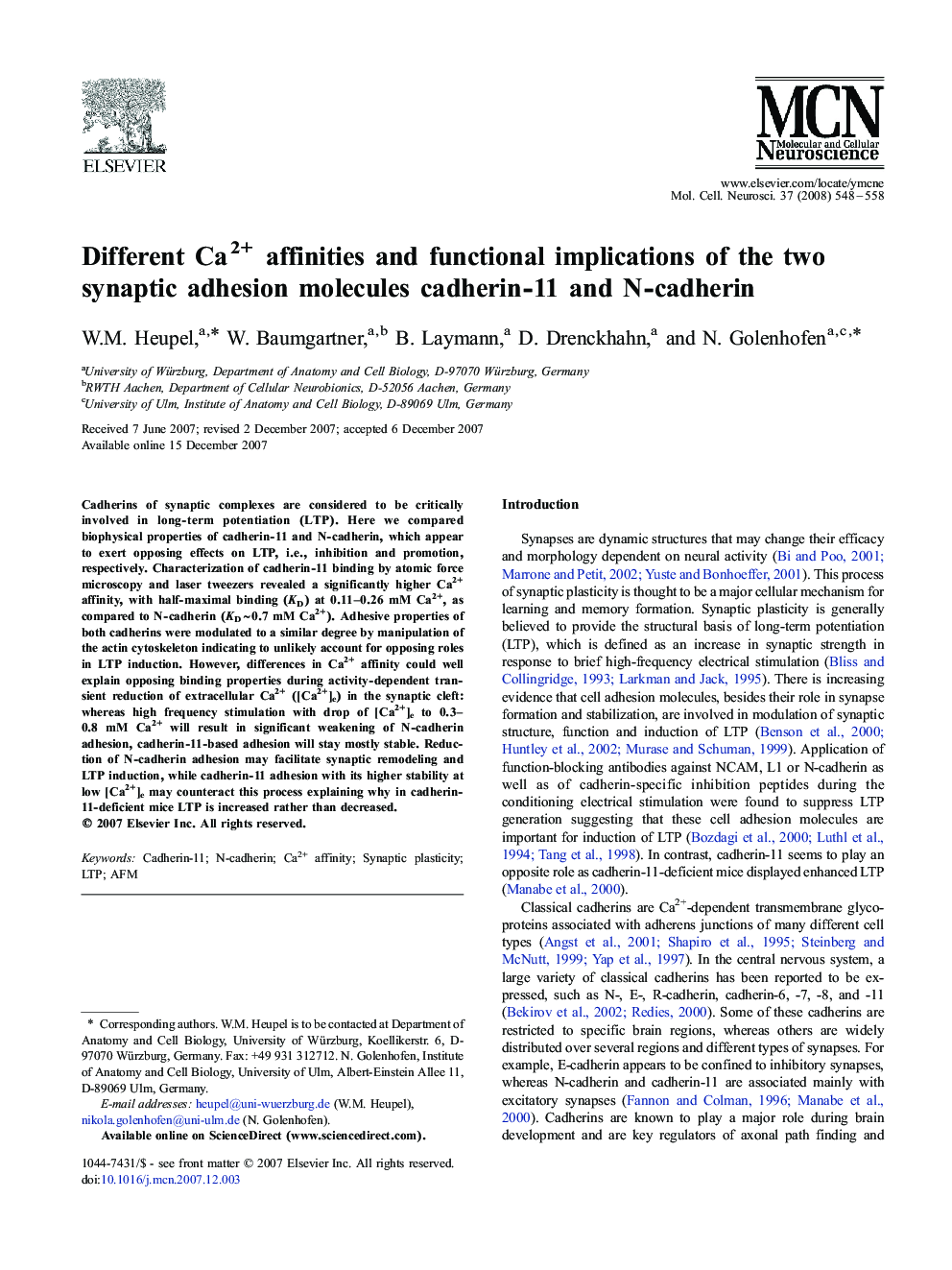| Article ID | Journal | Published Year | Pages | File Type |
|---|---|---|---|---|
| 2199248 | Molecular and Cellular Neuroscience | 2008 | 11 Pages |
Cadherins of synaptic complexes are considered to be critically involved in long-term potentiation (LTP). Here we compared biophysical properties of cadherin-11 and N-cadherin, which appear to exert opposing effects on LTP, i.e., inhibition and promotion, respectively. Characterization of cadherin-11 binding by atomic force microscopy and laser tweezers revealed a significantly higher Ca2+ affinity, with half-maximal binding (KD) at 0.11–0.26 mM Ca2+, as compared to N-cadherin (KD ∼ 0.7 mM Ca2+). Adhesive properties of both cadherins were modulated to a similar degree by manipulation of the actin cytoskeleton indicating to unlikely account for opposing roles in LTP induction. However, differences in Ca2+ affinity could well explain opposing binding properties during activity-dependent transient reduction of extracellular Ca2+ ([Ca2+]e) in the synaptic cleft: whereas high frequency stimulation with drop of [Ca2+]e to 0.3–0.8 mM Ca2+ will result in significant weakening of N-cadherin adhesion, cadherin-11-based adhesion will stay mostly stable. Reduction of N-cadherin adhesion may facilitate synaptic remodeling and LTP induction, while cadherin-11 adhesion with its higher stability at low [Ca2+]e may counteract this process explaining why in cadherin-11-deficient mice LTP is increased rather than decreased.
